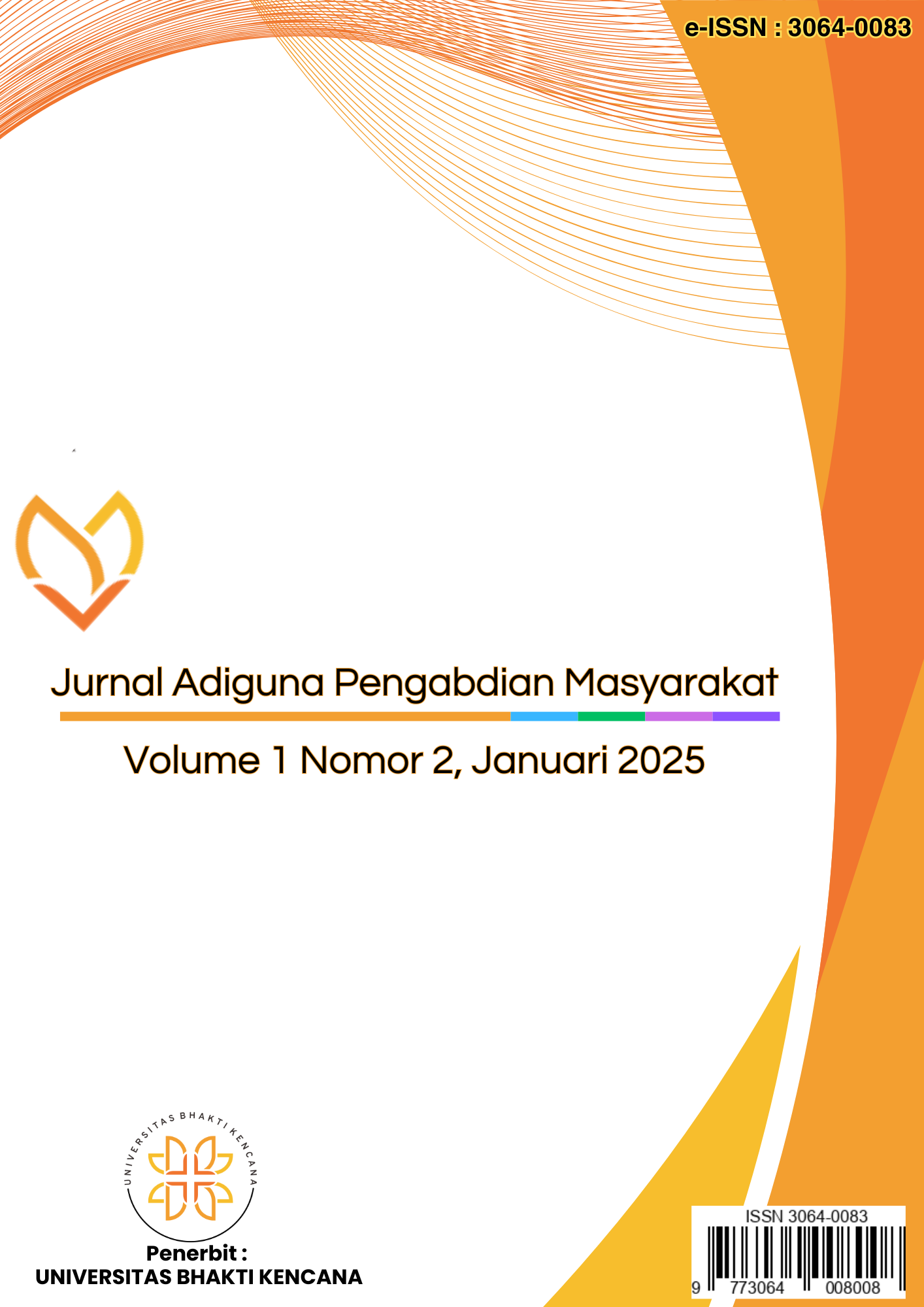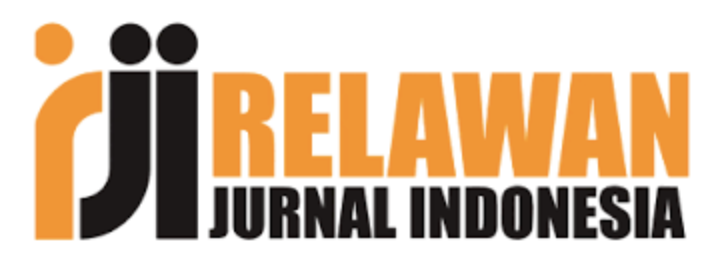Edukasi Pengenalan Dan Peran Senyawa Kimia Dalam Rimpang Curcuma Untuk Meningkatkan Kesehatan Masyarakat
DOI:
https://doi.org/10.70410/japm.v1i2.20Kata Kunci:
Pengabdian Kepada Masyarakat, Rimpang Curcuma, Senyawa kimiaAbstrak
Tanaman Obat di Indonesia sangatlah banyak jenisnya. Seperti jenis-jenis Curcuma terdapat 51 genus dan 1200 spesies tumbuhan yang termasuk ke dalam familia Zingiberaceae. Hanya saja mengenai kandungan senyawa aktifnya yang terkait dengan peranan dalam kehidupan sehari-hari masih terbatas. Kegiatan pengabdian kepada masyarakat ini bertujuan untuk memberikan pemahaman mengenai kandungan senyawa kimia yang terdapat pada beberapa jenis rimpang Curcuma dan manfaatnya bagi kesehatan. Dalam program pengabdian kepada masyarakat ini, kami melibatkan siswa/i SMK Wirasaba dan SMAN 2 Karawang melalui penyuluhan dan edukasi tentang kandungan senyawa aktif, dan pemanfaatan rimpang Curcuma, seperti Curcuma zedoaria, dan Curcuma heyneana Val.et van Zijp. Metodologi yang diterapkan mencakup presentasi, diskusi interaktif, serta memberikan leaflet. Hasil dari kegiatan ini menunjukkan bahwa peserta sangat antusias untuk menerapkan pengetahuan baru mengenai manfaat senyawa aktif, seperti curcumin, minyak atsiri, dan flavonoid yang ada dalam rimpang tersebut. Melalui pengabdian ini, dapat menunjukkan peningkatan signifikan dalam pemahaman tentang manfaat kesehatan dan peran kimia Curcuma, serta peningkatan minat dalam menciptakan produk kesehatan yang bersumber dari lokal dan akses yang lebih baik ke informasi yang relevan, menyoroti potensinya untuk meningkatkan kesehatan dan kesejahteraan masyarakat secara keseluruhan.
Referensi
Aggarwal, B.B., Yuan, W., Li, S., Gupta, S.C. (2013). Curcumin-free turmeric exhibits anti- inflammatory and anticancer activities: Identification of novel components of turmeric. Molecular Nutrition & Food Research, 57(9), 1529-1542.
Aggarwal, B. B., Sundaram, C., Malani, N., & Ichikawa, H. (2007). Curcumin: The Indian solid gold. The Molecular Targets and Therapeutic Uses of Curcumin in Health and Disease, 595(1), 1–75. https://doi.org/10.1007/978-0-387-46401-5_1
Aziz, T. A., & Hussain, S. A. (2018). Antimicrobial activity of Curcuma zedoaria. Journal of Pharmacy and Pharmacology, 5(3), 264-267.
Balai Penelitian tanaman oabat dan Aromatik. (2010). Standar prosedur Operasional Budidaya
Jahe, Kencur, Kunyit, dan Temulawak, cetakan ke-2., Bogor; Balitro; Hal 31-35. B & T World Seeds, Common names list.
Chien, T. M., Chiang, C. P., Tsai, C. C., & Liu, C. H. (2011). Anti-inflammatory and anticancer activities of extracts and compounds from the rhizomes of Curcuma zedoaria. Journal of Ethnopharmacology, 136(2), 432-438.
Curcuma - Wikipedia bahasa Indonesia, ensiklopedia bebas
Dalimartha, S. (. (2007).). Atlas Tumbuhan Obat Indonesia, Jilid 3,. Jakarta: Puspa Swara; Hal 170-174.
Hewlings, S.J., & Kalman, D.S. (2017). Curcumin: A review of its’ effects on human health. Foods, 6(10), 92.
Hardinsyah, H. (2017). Potensi dan Peran Jamu dalam Pencapaian Indonesia Sehat 2019. Jurnal Gizi dan Pangan, 12(1), 1-10.
Mahfudz, N., Ramadani, Y.R., & Arief, I.I. (2020). Kajian Budaya Lokal: Filosofi dan Pengaruh Penggunaan Jamu dalam Kehidupan Masyarakat Indonesia. Jurnal Penelitian Pendidikan Luar Sekolah, 5(2), 190-204.
Miachir JI, Romani VLM, Amaral AFC, Mello MO, Crocomo OJ, Melo M. (2004). Micropropagation and callogenesis of Curcuma zedoaria Roscoe. Sci Agric 61(4): 427-432.
Kementrian Kesehatan Republik Indonesia. (2017). Farmakope Herbal Indonesia, edisi II., Jakarta; Kemenkes, RI.
Kemenkes RI. (2016). Peraturan Menteri Kesehatan Republik Indonesia Nomor 6 Tahun 2016 Tentang Formularium Obat Herbal Asli Indonesia.
Prasad, S., & Aggarwal, B.B. (2011). Turmeric, the golden spice: From traditional medicine to modern medicine. In: Benzie, I.F.F., & Wachtel-Galor, S. (Eds.), Herbal Medicine: Biomolecular and Clinical Aspects. 2nd edition. Boca Raton (FL): CRC Press/Taylor & Francis.
Rukmana, R. (2004). “Temu-Temuan”, Kanisius; Hal 14.
Srirangam, R. (2009). Anti-inflammatory activity of Curcuma zedoaria Rosc. International Journal of Pharmacy and Pharmaceutical Sciences, 1(1), 170-177.
Shehzad, A., Rehman, G., & Lee, Y.S. (2013). Curcumin in inflammatory diseases. BioFactors, 39(1), 69-77.
Srivastava, K.C., & Bordia, A. (1995). Curcumin, a major component of food spice turmeric (Curcuma longa) inhibits aggregation and alters eicosanoid metabolism in human blood platelets. Prostaglandins, Leukotrienes and Essential Fatty Acids, 52(4), 223-227.
Supriyanto, D., & Nugroho, A. E. (2016). Curcuma heyneana Val. dan aplikasinya dalam pengobatan tradisional. Biodiversitas, 17(1), 16-21.
Thangapazham, R.L., & Sharma, A. (2010). Potential health benefits of curcumin: A review of the clinical evidence. Journal of Natural Products, 73(10), 208-212.
Trimanto., Dwiyanti., D, Indriyani, S. (2017). Morfologi, anatomi dan uji histokimia Rimpang Curcuma aeruginosa Roxb; Curcuma longa L. dan Curcuma heyneana Valeton dan Zijp.
Temu giring - Wikipedia bahasa Indonesia, ensiklopedia bebas.
Utami, P. (2008). Buku pintar tanaman obat, penerbit; PT. Agromedia Pustaka, Jakarta Selatan, hal 241, 243
Velayudhan, K.C., Amalraj, V.A. and Muralidharan, V.K. (1996). The conspectus of the genus Curcuma in India. Journal of Economic and Taxonomic Botany, 20, pp, 345–382.
Unduhan
Diterbitkan
Cara Mengutip
Terbitan
Bagian
Citation Check
Lisensi
Hak Cipta (c) 2025 Lia Fikayuniar Lia, Eko Sri Wahyuningsih, Ermi Abriyani, Sudrajat Sugiharta, Neni Sri Gunarti, Putri Agustina

Artikel ini berlisensi Creative Commons Attribution 4.0 International License.
Authors who publish in Jurnal Adiguna Pengabdian Masyarakat agree to the following terms:
This license enables reusers to distribute, remix, adapt, and build upon the material in any medium or format, so long as attribution is given to the creator. The license allows for commercial use. CC BY includes the following elements:
BY: credit must be given to the creator.
You are free to:
- Share — copy and redistribute the material in any medium or format for any purpose, even commercially.
- Adapt — remix, transform, and build upon the material for any purpose, even commercially.
- The licensor cannot revoke these freedoms as long as you follow the license terms.
Under the following terms:
- Attribution — You must give appropriate credit , provide a link to the license, and indicate if changes were made . You may do so in any reasonable manner, but not in any way that suggests the licensor endorses you or your use.
- No additional restrictions — You may not apply legal terms or technological measures that legally restrict others from doing anything the license permits.
Notices:
You do not have to comply with the license for elements of the material in the public domain or where your use is permitted by an applicable exception or limitation .
No warranties are given. The license may not give you all of the permissions necessary for your intended use. For example, other rights such as publicity, privacy, or moral rights may limit how you use the material.














